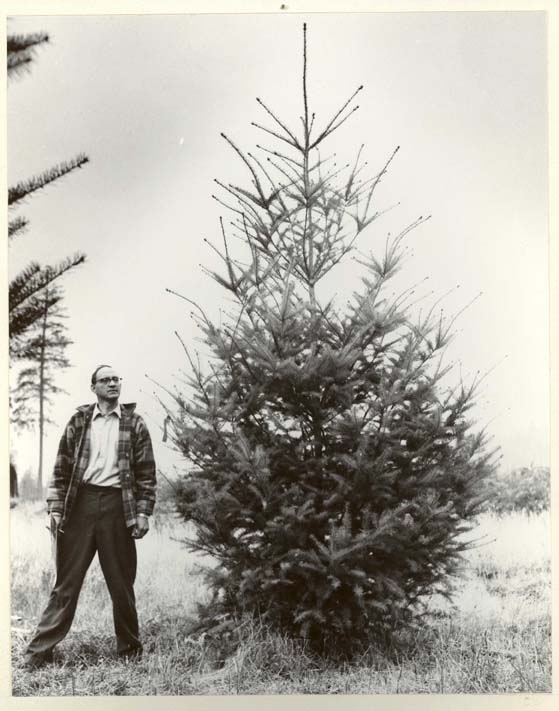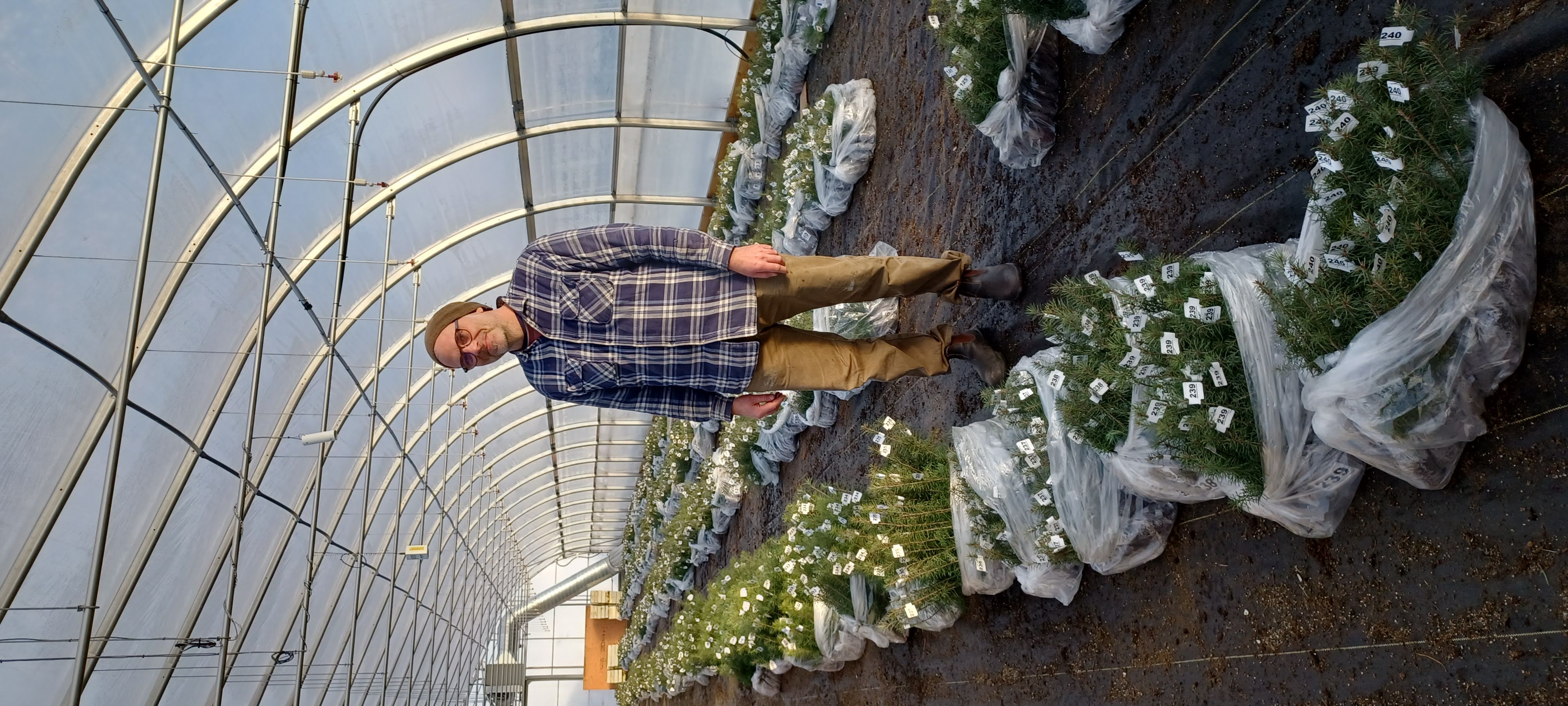Interior Douglas-fir tree breeding program
The Interior Douglas-fir tree breeding program began in 1982 with the objective of producing improved and genetically diverse seed for planting on productive forest land in south-central British Columbia.
The breeding goal is to improve traits related to tree size (height, diameter and volume) while maintaining wood relative density near old growth values. The recent discovery of resistance to Armillaria root disease in Interior Douglas-fir suggests that resistance to root diseases could become an important trait of interest.
Inter-varietal (Coastal/Interior Douglas-fir) hybrids have shown to be hardy and fast growing in the Nelson low elevation zone. The Nelson second-generation breeding population has been augmented with high breeding value parents from the B.C. coastal breeding program and superior submaritime seed sources growing in the 40-year-old Trinity Valley range-wide Interior Douglas-fir provenance test.
Seed orchards were established in the North Okanagan in the early 1990s. In 2016, approximately 15.3 million (31 percent) of the 49.4 million Interior Douglas-fir seedlings scheduled for planting in B.C. came from seed orchards.
References
- Cruikshank, M.G. and B. Jaquish. 2014. Resistance and tolerance in juvenile interior Douglas-fir trees (Pseudotsuga menziesii var. glauca) artificially inoculated with Armillaria ostoyae. Forest Pathology.
- Rehfeldt, G.E., B.C. Jaquish, J. López-Upton, C. Sáenz-Romero, J.B. St Clair, L.P. Leites and D. G. Joyce. 2014. Comparative genetic responses to climate for the varieties of Pinus ponderosa and Pseudotsuga menziesii: Realized climate niches. Forest Ecology and Management. pp. 126-137.
- G.E. Rehfeldt, L.P. Leites, J. B. St Clair, B.C. Jaquish, C. Sáenz-Romero, J. López-Upton and D. G. Joyce. 2014. Comparative genetic responses to climate in the varieties of Pinus ponderosa and Pseudotsuga menziesii: Clines in growth potential. Forest Ecology and Management. pp. 138-146.
- G.E. Rehfeldt, B.C. Jaquish, C. Saenz-Romero, D.G. Joyce, L.P. Leites, J.B. St Clair, J. Lopez-Upton. 2014. Comparative genetic responses to climate in the varieties of Pinus ponderosa and Pseudotsuga menziesii: Reforestation. Forest Ecology and Management. pp. 147-157.
- Xiao-Xin Wei, Jean Beaulieu, Damase P. Khasa, Jesús Vargas-Hernández, Javier López-Upton, Barry Jaquish, Jean Bousquet. 2011. Range-wide chloroplast and mitochondrial DNA imprints reveal multiple lineages and complex biogeographic history for Douglas-fir. Tree Genetics and Genomes.
- Kong, L, P von Aderkas, S. Owen, B. Jaquish, J. Woods and S Abrams. 2011. Effects of stem girdling on cone yield and endogenous phytohormones and metabolites in developing long shoots of Douglas-fir (Pseudotsuga menziesii). New Forests.

Dr. Allan Orr-Ewing, the first geneticist in the B.C. Forest Service, standing beside one of his wide-crossed Douglas-fir progeny.

Second-cycle interior Douglas-fir progeny trial being lifted and arranged into and experimental design. Each bag of seedlings is a unique family from a controlled cross.
